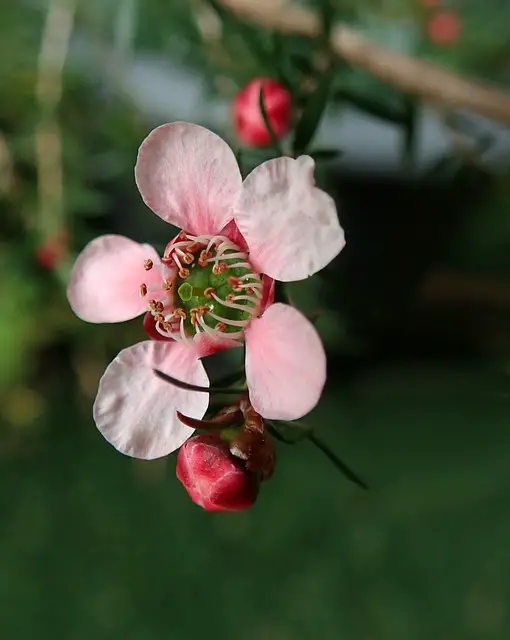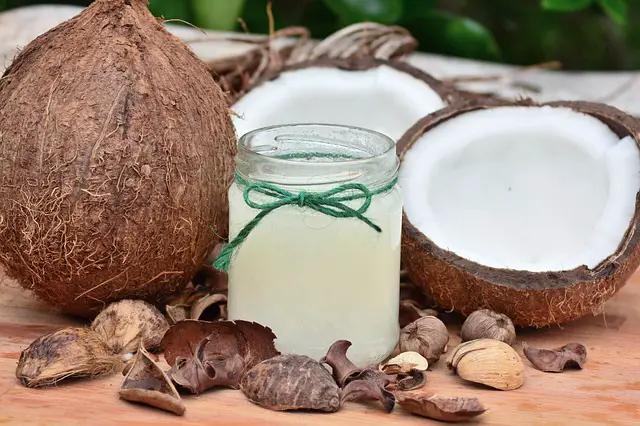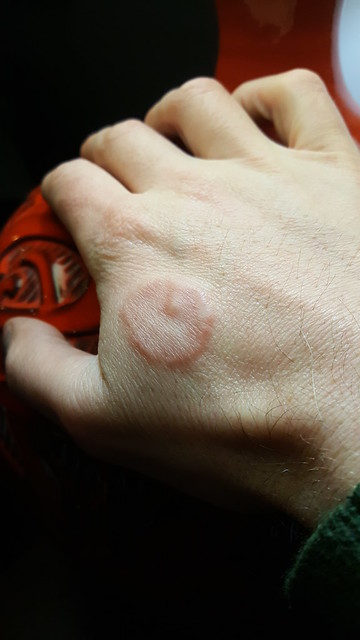What's On This Page
Granuloma annulare natural treatment
In this blog, we delve into the topic of Granuloma Annulare treatment and uncover the potential benefits of natural remedies, including the widely acclaimed apple cider vinegar. Granuloma Annulare is a skin condition that affects many individuals, causing circular or ring-shaped rashes on the skin. While it is generally harmless, its appearance can cause concern for those affected. That’s why we’re here to shed light on alternative treatments that harness the power of nature. Join us as we explore the potential of apple cider vinegar and natural remedies for granuloma annulare with insights backed by scientific research and anecdotal evidence. So, let’s dive in and discover how these remedies can alleviate the symptoms and restore your skin’s natural radiance. Get ready to embark on a journey of holistic wellness and empowerment!
Before we delve into granuloma
What is granuloma annulare
Granuloma annulare is a skin condition that is considered relatively rare. It is characterized by a chronic and degenerative nature, presenting as a rash resembling small rings or bumps on the skin, which can be pink or purple in color. The most prevalent form of granuloma annulare is localized, meaning it primarily affects a small area of the skin rather than being systemic. It commonly affects the hands, feet, ankles, and elbows.
Contrary to common perception, granuloma annulare is typically not associated with pain. However, individuals affected by this condition may experience itching in the affected area. It’s important to note that the discomfort arises from scratching the itchy region rather than being an inherent disease characteristic. Moreover, it’s crucial to understand that granuloma annulare is not contagious. In most cases, if left untreated, this condition tends to resolve independently within a few months.
Types of granuloma annulare
Granuloma annulare manifests in several types, each with different characteristics. The most common type is localized granuloma annulare, which primarily affects children and young adults, but can occur in people of any age. Usually, this form resolves on its own within a few months. It can be recognized by purple or pink patches on the skin that are 2.5 to 5 cm in diameter. Initially, the spots are small and raised, but they become wider and flatter over time until they eventually disappear. The skin surface usually feels smooth, while the underlying inflamed layer gives some firmness to the affected area.
The second type, called extensive granuloma annulare, is less common and affects mainly adults. The patches of this type are larger and cover more area than in localized granuloma annulare. They have a similar pink/purple colouration and often occur in areas with a larger surface area, such as the trunk, forearms, and legs. The patches can be up to 10 cm wide and often occur in skin folds, such as the armpits, joints, and groin area.
There is also a variant of granuloma annulare that occurs under the skin and is most commonly seen in children. It is characterized by itching and the formation of firm, rubbery patches under the skin’s surface. These patches can vary from 5 mm to 4 cm wide. The eyelids, scalp, buttocks, feet and ankles are often affected.
http://www.bad.org.uk/shared/get-file.ashx?id=85&itemtype=document
Causes and Symptoms
Granuloma annulare occurs when the dermis becomes inflamed. Its sensitivity increases significantly. It is not a condition that is contagious or hereditary. It does not run in families, nor does this increase the risk of having it. There is some evidence that links this condition to diabetes. This has been seen in very few rare cases. per NHS
The underlying cause of granuloma annulare is largely unknown. Various factors have been linked to it. Conditions such as stress, thyroid disease and autoimmune diseases have been connected. However, there is no conclusive evidence to link any one of these.
It has also been found to be sometimes triggered by sun exposure, tattoos, certain medication and underlying medical conditions.
There are no significant symptoms of granuloma annulare. You may find that the skin in the affected area becomes increasingly tender to touch, knocks or general contact. This is due to the hypersensitivity of the whole area.
https://www.uptodate.com/contents/granuloma-annulare
There isn’t a cure for this condition. This is largely because we do not conclusively know the cause. Treatment focuses largely on dealing with the symptoms. Here are some treatment methods:
Apple Cider Vinegar Granuloma Annulare Treatment
Apple cider vinegar brings anti-inflammatory properties that inflamed areas desperately need. It is also antibacterial. There are two ways that you can use apple cider vinegar to treat granuloma annulare. You can apply it directly onto the affected area or take it orally.
The local application should be done in minute doses. The skin
You should make sure that you use unadulterated apple cider vinegar. Check that it has not been diluted before getting onto the shelf.
Other granuloma treatment methods
Tea Tree Essential Oil

Tea Tree
Once diluted, you can use it twice daily on the affected area. Watch for changes, especially if you already take medication for other conditions.
Virgin Coconut Oil

Virgin coconut oil provides a much-needed soothing effect to inflamed skin. It can be applied directly to the affected area. One of the effects of coconut oil which is usually understated, is that it soothes the itchiness of the skin. It also adds a temporary coating layer over the skin. This traps microbes.
Milk of Magnesia
With milk, you always know that this is your go-to if you want to create a neutral environment. Milk of magnesia also provides a soothing alkaline effect around areas affected by Granuloma Annulare. It eases inflammation and allows the skin to heal.
Application is simple. Dip a cotton ball and apply it directly onto the affected area. Leave it on the area until it has dried up. You are advised to do this twice a day, with the rinsing of the area in between applications.
Green Tea
Green Tea is an antioxidant. It cleanses the system. I remember watching hours of documentaries as a child. There are a lot of uses for green tea. In this case, you would drink it and allow it to help the body flush out any impurities that may be implicated.
You can also boil the tea, take the leaves and place them on the affected area.
Aloe Vera
If you need to soothe the affected area, aloe vera is another good pick. It has anti-inflammatory effects that would reduce the inflammation in the whole area. It would also reduce any itchiness.
You are encouraged to apply this twice a day.
Avocado Paste
Vitamin E is incredible at helping t
Apply the avocado paste over the affected area. The best practice would be to apply it before
Alternatively, you could apply it during the day and wash it off afterwards.
Vitamin E
We have already covered the avocado paste that provides vitamin E. It can also be purchased as capsules that can be ingested.
Dietary Changes
Dietary changes are also advisable. The starting point can be a simple vegetarian or vegan diet. Monitor the changes that come about and adjust accordingly.
Conclusion
This blog post explored Granuloma Annulare treatment, focusing on the potential benefits of natural remedies like apple cider vinegar. Granuloma Annulare is a rare skin condition characterized by circular or ring-shaped rashes that can cause concern. Alternative treatments harness the power of nature to provide relief. Through scientific research and anecdotal evidence, we’ve discovered the potential of apple cider vinegar and other remedies to address symptoms and restore skin’s natural radiance. These treatments offer hope and support for individuals dealing with Granuloma Annulare. While a cure may not exist, understanding these methods can significantly improve condition management. Embrace a natural approach to your well-being and explore the possibilities today!
For further reading on Granuloma Annulare, you can visit the following resources:

My condition started over 2 years ago and has continued to appear in different areas. I have been on the creams prescribed by the dr and that doesn’t help. Also I am taking vitamins c d e collagen and biotin. I have not tried the acv or milk of magnesia yet. I would appreciate anything else that might be current on this skin condition. I been dealing with this like I said for over 2 years. Is this time frame normal?
Hi. This is interesting. Have you got evidence of which of these helped, and how many people? There are quite a few options and I’m wondering which to try or combine? For example apple cider vinegar applied but use coconut oil as a moisturiser. I have widespread GA, I’ve just completed a 6 week cleanse in the hope it might help, but no evidence so far.